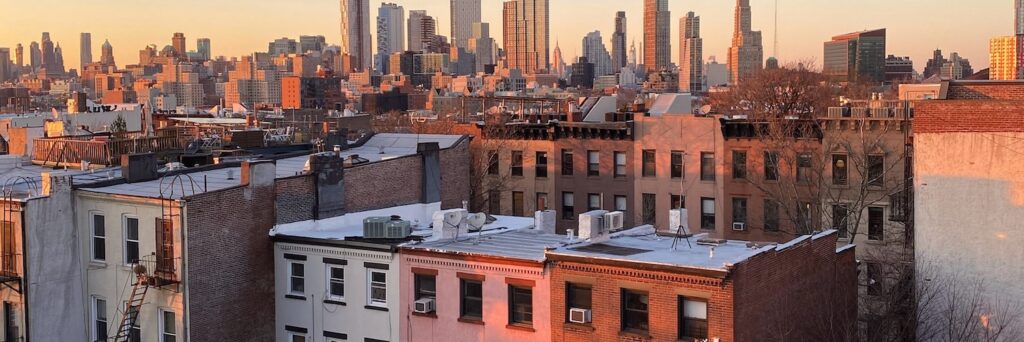Mayor Eric Adams has announced a new initiative within the “City of Yes for Housing Opportunity” proposal that seeks to generate tens of thousands of affordable homes in New York City. The new initiative is targeting areas previously out of reach for many working-class New Yorkers due to an outdated floor-to-area-ratio cap, which historically has restricted the construction of new homes in high-demand zones. The proposal is seeking to lift the floor-to-area-ratio cap in these areas, such as in Midtown, Manhattan.
The plan requires state approval in order to successfully lift the FAR cap. If approved, it will permit new residential projects to significantly increase their development size, and will feature a provision for affordable housing through the Mandatory Inclusionary Housing program, which requires that 20 to 30 percent of units in new developments be affordable for those earning 40 to 80 percent of the area median income.
The urgency of this initiative is highlighted by the Department of City Planning’s “rezoning lookback” reports, which assess the impact of past rezoning actions on local housing production. The findings illustrate a concentrated housing development in specific areas, with restrictive zoning halting production elsewhere, reinforcing the need for affordable housing throughout all five boroughs.
Alongside the proposal to lift the FAR cap, the Adams administration is calling for legislative actions to facilitate affordable housing development. These include a new affordable housing tax incentive, converting vacant office buildings into affordable homes, and legalizing basement and cellar apartments.
“Addressing the affordability challenges our city is faced with requires action from every level of government and the ability to build more housing in every neighborhood of the five boroughs,” said Leila Bozorg, executive director for housing for the department of city planning. “Ensuring we are ready to move on pending state action to lift the FAR cap, along with other bold ideas in our ‘City of Yes for a Housing Opportunity’ proposal, means we’ll be a step closer to delivering permanently affordable homes in neighborhoods that have historically been inaccessible for many New Yorkers.”
Subscribe to YIMBY’s daily e-mail
Follow YIMBYgram for real-time photo updates
Like YIMBY on Facebook
Follow YIMBY’s Twitter for the latest in YIMBYnews



How about lowering taxes and decreasing all the red tape and years of meetings builders have to go through to get anything done.
yeah, mandatory inclusionary zoning is a red herring that doesn’t actually increase construction or reduce rents. we don’t even need to lift the FAR cap, because most of the city is well below the current allowable 12. just upzone existing areas for gods sake.
Why not just demand better funding for Mitchell-Lama and NYCHA? Don’t waste time and money pretending these new efforts will help house those in greatest need: the elderly, the disabled and New Yorkers earning less than $60000 yrly.
Nycha wants about half a million to repair old units….dont give them more money…you can almost build new for that…
The housing crisis is a serious problem all over the US, and in most other countries too. Since 1993, household income has gone up 138%, but housing costs have gone up 306%. Huge corporations like Blackstone (America’s largest landlord) are buying up residential properties and jacking the rent or sale price. Restrictive zoning and NIMBYs continue to discourage new construction which keeps supply too tight. Over half of the homeless people in LA are former renters now priced out.
NYC somehow managed to pass rent stabilization in 1969 and we clearly need a new program to help all New Yorkers afford a home. This new program only just begins to address this very serious problem.
Is the mandatory inclusionary zoning only applicable for developments that utilize the increased FAR?
That’s how this should work. Add an as-of-right option to increase density, but only if a percentage added area is delegated to affordable housing. No council approval. Not ULRP circus. No politics for developers.
I suspect that is not what they are doing, and this will end up being yet another zoning restriction that increases development costs and drives up market rents.
sounds good, I just hope its truly affordable, and start building them in better off neighborhoods, enough with the high crime neighborhoods, because not everybody want to raise there family in undesirable hoods
That would be really dumb, putting the cheapest housing in the most expensive neighborhoods. Extremely inefficient and counterintuitive, and guaranteed to produce as few housing units as possible, given affordable unit production is dependent on m market-rate cross subsidies. The entire city should be upzoned, and there should be no inclusionary housing requirements, which do nothing but raise costs.
Raise costs for who, rich people who can afford the market rate?
A large chunk of NYC’s population will always need subsidized housing whether market rate purists like it or not
Along Northern Blvd. from Flushing to Bayside, the old one-story commercial “taxpayers” are being replaced with mixed-use buildings. These are often around 10 stories. In northern Flushing, there is an area of 41 co-op buildings largely from the 1950s. This area was downzoned at some point and only 40 ft. high row houses can be built instead of the present 6-story+ basement buildings. I would think a first step would be to legalize these older buildings, not that they are going any place soon.
These 41 buildings are Section 213 co-ops that were never subsidized. These are better than having affordable units in buildings where the market rate tenants have to make up the cost of these. Of course, the prices of these co-ops have increased over the years, perhaps by a factor of 8 in real dollars in my half century here.